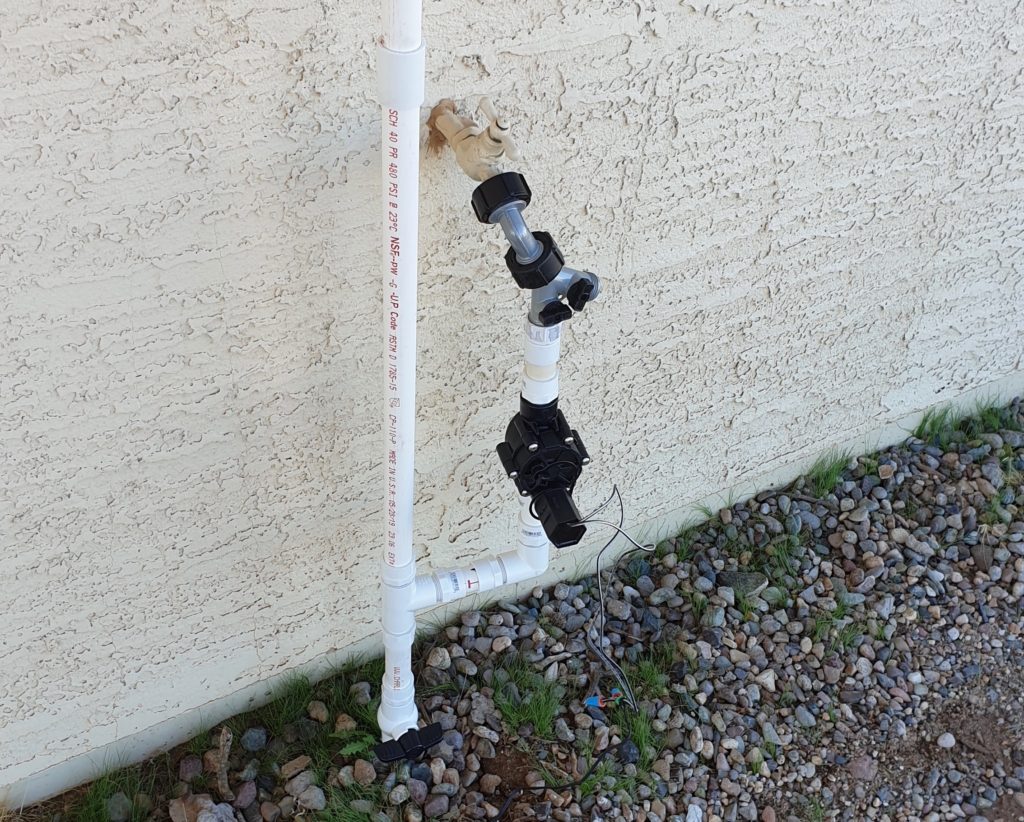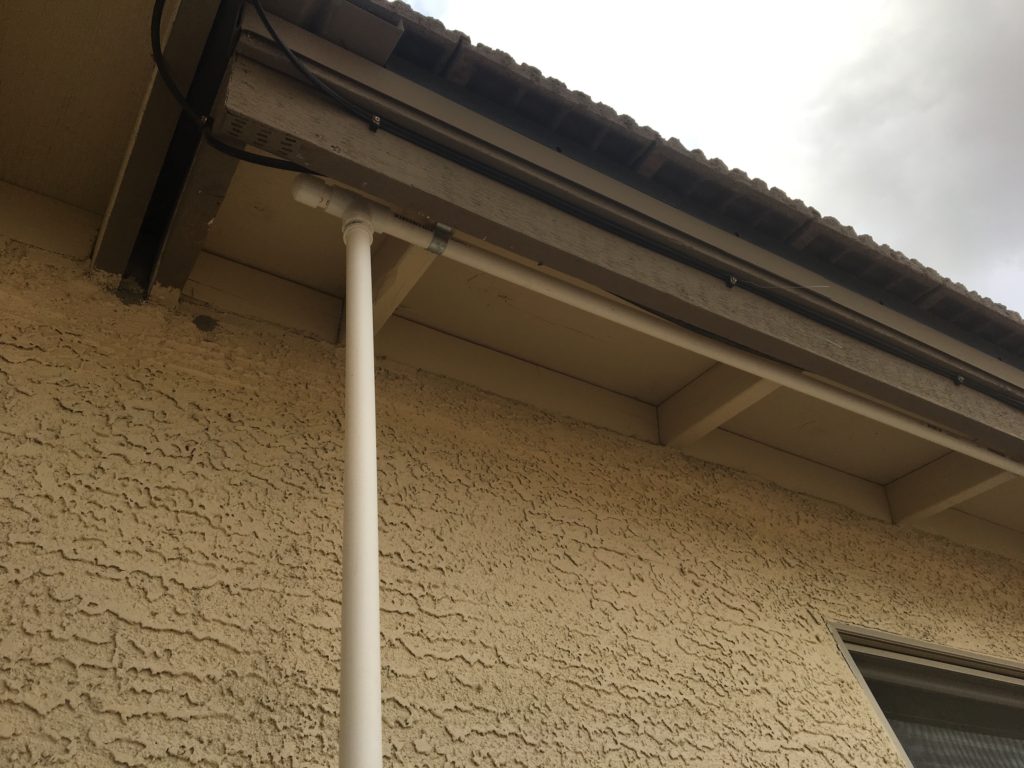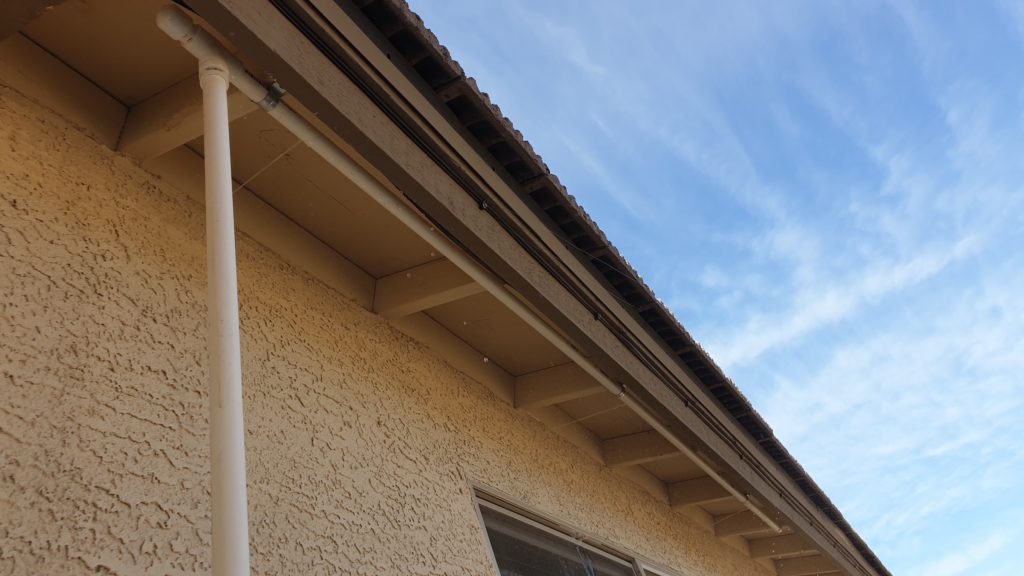The mathematics have confirmed that the anti-woodpecker spray system can protect the whole house. It’s time to start building a prototype. Most of the system is just 3/4 inch PVC pipe, so we will focus on the smart-home integration with the prototype.
I originally looked at using smart valves to control the water flow. As you can probably guess, they are not very cost effective. Smart valves run $250 to $300 a pop, and I need at least 2 of them for the system. It quickly becomes cost-prohibitive.
Thankfully, there was an obvious and much cheaper solution that I frequently use in smart-home technology. Instead of buying a smart device, which in this case would be the smart valve, buy a dumb device and connect it to a smart switch. All of a sudden, that $300 price drops to about $50. You can put a lot of “dumb + smart switch” devices for the cost of 1 smart device.
For the “dumb” valve, I used a solenoid valve that is used in irrigation systems. They are readily available at Lowe’s and Home Depot for about $15. Instead of using an irrigation timer, I will connect it to the smart switch. I put a Y-connecter on the spigot so I can still connect a garden hose without having to disconnect the woodpecker system. I included a ball valve on the bottom of the system if I ever need to drain the pipes on cold nights.

The setup up top is dirt simple. I attached the PVC pipe to the bottom of the eaves with pipe clamps. I then drilled three 1/16 inch holes in the side of the pipe to be the sprayer nozzles. The actual system will have many more holes. Depending on the connection, the pieces of PVC pipe are either screwed or glued together. I tried to use screw connections whenever I could. If I ever needed to take the system down, replace a part, or make an upgrade, then I could.

Now, it’s time for the moment of truth: turning it on to see if it will work. We’ll find out just how good my calculations were, seeing as stupid arithmetic errors were at one point one of my signature moves. Thankfully, using a script eliminates most of those.

It turned on, the water sprayed forcefully, and the system didn’t blow itself to pieces! Win, win, and win.
A Few Observations of the Anti-Woodpecker Sprayer Prototype
One thing I noticed right away on the first test was that the valve had a hard time turning off. It eventually did, but it took way longer than it should have. This was due to the system having too much water pressure – mainly due to the fact that there was only 10 feet of pipe on the prototype. I was a bit concerned because I didn’t want to get in a scenario where the system activated while I was not at home and then couldn’t shut itself off.
After backing off the pressure by slightly closing the spigot, the system worked much better. The valve had no issues turning off, and the anti-woodpecker sprayers were actually more powerful with less water pressure. Remember in the calculations, if we over-pressurize the system, we lose all of that extra energy and more due to friction. I’ll be the first to admit I’m a bit of a nerd when it comes to things like this. As cool as it is to see in the mathematics and equations, it’s even more fascinating to actually see it in a real-life application.
Where Do We Go From Here
The next step will be to expand the system so it protects the entire house. The big challenge will be to get the motion sensors to work properly. Motion sensors are designed to have a very wide field of vision because they’re primarily used for security purposes, but I need them to have a narrow field of vision. I don’t want the system to activate every time someone walks by or every time I step outside. I’ve got a few ideas right now, but they need some more thought before I can elaborate on them here.
An Added Bonus
Ever since I bought the house, I have wanted to put misters on my patio to make sitting out there in the hotter months more comfortable. The anti-woodpecker spray system will act as the foundation for the misters, which will make installing the misters much easier, since the plumbing will already be there.
Well, that’s it for now. Stay tuned for future updates. This battle is only beginning. Thankfully, mother nature has given me a big assist over the past few weeks with cold, rainy weather, which has kept the woodpeckers at bay. I fully expect them to be back out in full force later this winter and into the spring.